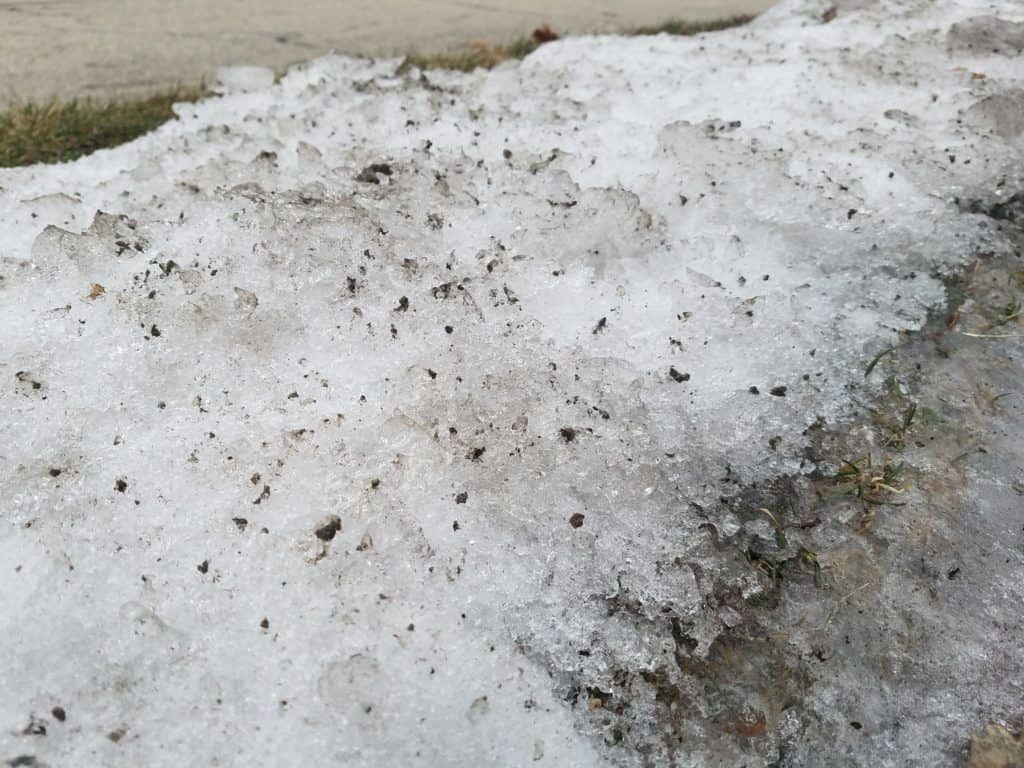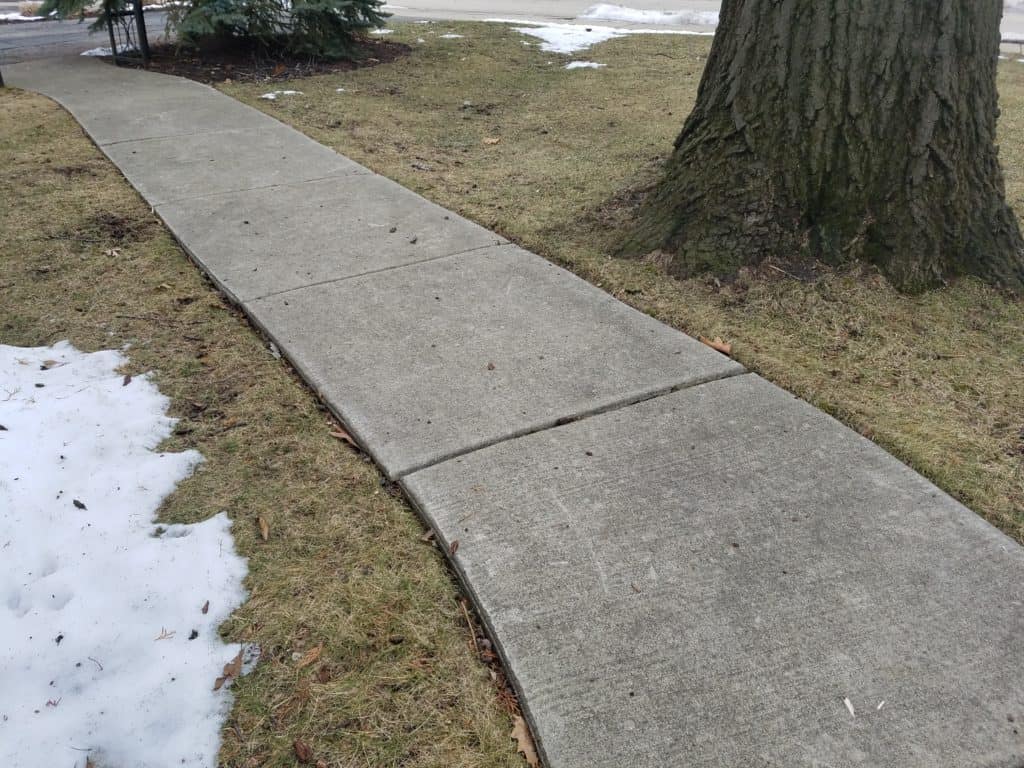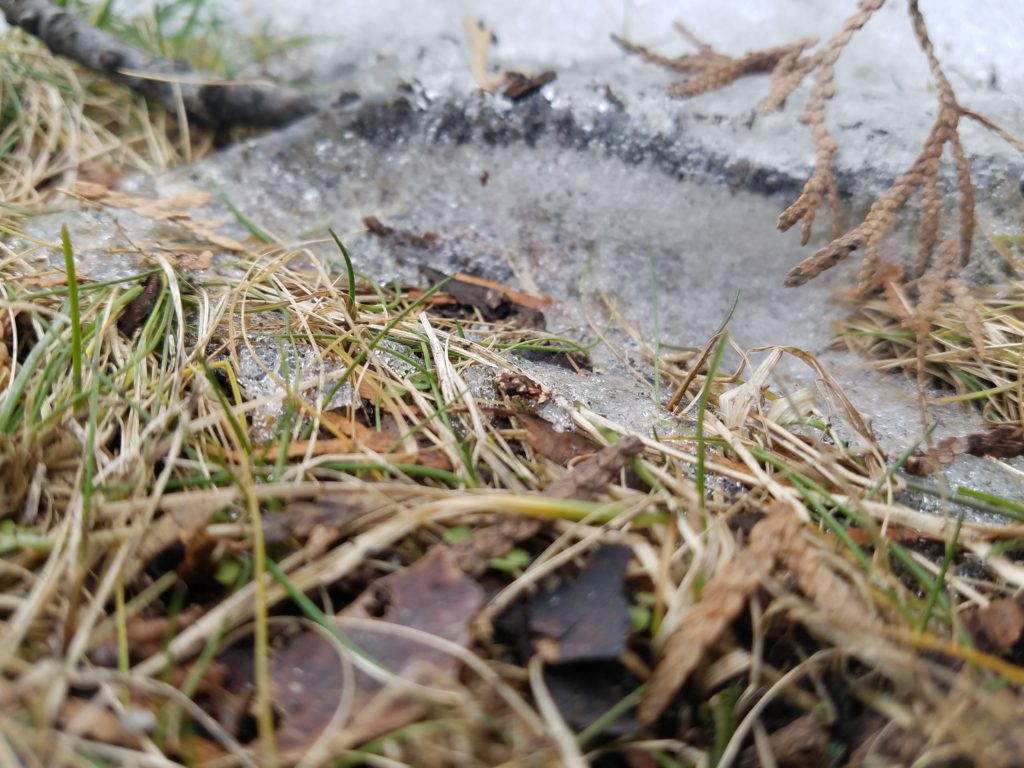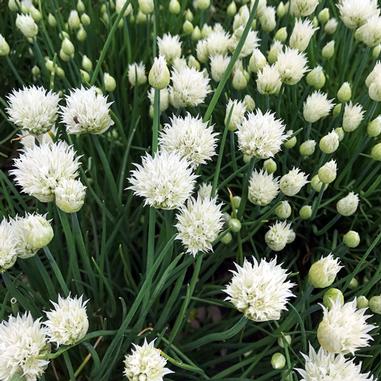
The landscape lay waste to February’s warm arrival and took on a most pathetic look. The once beautiful, pure white blanket of snow had been reduced to the dirty, grungy spoils of a Winter warming, but that wasn’t all that remained in the receding snow.

As the landscape below the mounds and mountains of snow began to reveal itself, it was evident that such harsh winters can absolutely take a toll on our lawns and gardens, with the former taking the brunt of winter’s fury. Once Spring arrives and temperatures level out, we will know exactly what we’re dealing with, but it’s almost guaranteed we’ll experience some winter damage, so here’s what to look for, and how to correct:
Salt Damage
Salt damaged turf along driveways, sidewalks, and roads appears brown, burnt, and dead. Salt is used as a deicing material and often affects the surrounding turf and soil. As snow melts and Spring rains arrive, the salt is generally diluted and leaches through the soil to a level below the root zone, making reseeding and overseeding possible. If Spring rains are sparse, it is sometimes recommended that you flood the affected areas with a hose to further dilute the salt, lowering the salt content of the soil to an acceptable level. Some even suggest spreading gypsum or limestone in an effort to return balance to the soil. Unfortunately, there are no effective preventative measures, other than to stop using salt altogether.

Snow Mold
Snow mold is a fungus caused by extended periods of snow-covered turf. There are two different types: Gray (Typhula blight) and pink (Fusarium patch) with the latter being more destructive. Circular patches of crusty, matted grass are highly visible in affected areas. They can be as small as two inches in diameter up to several feet, with overlapping circles. Fortunately, gray snow mold is fairly innocuous and will disappear as conditions dry. Pink snow mold is more nefarious and can destroy the roots and crowns of the lawn. Raking should be performed to break the crust, and reseeding and overseeding may be necessary. In an effort to prevent snow mold, mowing should continue in the Fall until the grass has gone dormant and thatch should be managed with proper aerating.
Vole Damage
Often mistaken for the carnivorous mole, voles are herbivores that tend to be quite busy in winter, dining on grass blades, and creating winding trails of damaged grass. Snow provides the perfect cover for voles to traverse the landscape, hidden from predators as they scavenge above ground. Vole damage is mostly superficial, although the scarring runways can be shocking as the snow starts to melt. Because the crowns and root systems are left in tact, grass will generally grow and fill in as the weather warms. Raking and overseeding of weak areas may be needed. To prevent vole damage, continue to mow until the grass has gone dormant in Fall, and cut the grass shorter, about 2″, for the last mow of the season. Keep brush piles and compost piles away from turf areas, if possible, as voles like to hunker down here..
As temperatures begin to rise and snow begins to melt in Spring, our landscapes, especially our turf, may emerge a little worse for wear, but rest assured, most Winter damage can be corrected with a little care and seed. Reach out to Sweeney’s to schedule your turf evaluation and renovation. After all, Spring is not so far away.
Plant of the Week

Cottonball Flowering Onion
Lovely, snowy-white flowers bloom amongst grassy-like foliage April – May. Prefers full sun and dry soil. Grows 6-8″ tall and 12-18″ wide. Attracts butterflies and other pollinators. Salt tolerant. Old heritage variety originally from Newfoundland.
“February is the border between winter and spring.”
-Terri Guillemets
Warm wishes,
Kim Sweeney
